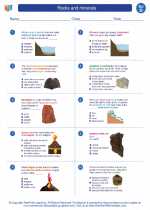Elliptical Polarization
Elliptical polarization is a type of polarization in which the tip of the electric field vector traces an elliptical path as it propagates through space. This type of polarization occurs when the electric field has both an amplitude and phase difference between its orthogonal components.
Understanding Elliptical Polarization
Elliptical polarization can be visualized as a combination of linear and circular polarization. In this type of polarization, the electric field vector traces an ellipse in the plane perpendicular to the direction of propagation. The ellipse can be oriented at any angle relative to the horizontal and vertical axes, and its shape and orientation depend on the amplitude and phase relationship between the orthogonal components of the electric field.
Polarization States
There are two main types of elliptical polarization: right-handed elliptical polarization and left-handed elliptical polarization. These states are determined by the orientation of the ellipse traced by the electric field vector. In right-handed elliptical polarization, the electric field vector rotates in a clockwise direction as it propagates, while in left-handed elliptical polarization, the rotation is counterclockwise.
Applications
Elliptical polarization is commonly used in various applications such as satellite communication, radar systems, and optical devices. It allows for the manipulation of the polarization state of electromagnetic waves, which is essential in many technological and scientific fields.
Study Guide
- Define elliptical polarization and explain how it differs from linear and circular polarization.
- Describe the characteristics of right-handed and left-handed elliptical polarization.
- Discuss the applications of elliptical polarization in real-world technologies and devices.
- Explain how elliptical polarization can be generated and manipulated in wave propagation.
Understanding elliptical polarization is important for various fields of science and engineering, and mastering this concept can open up opportunities for further research and technological advancements.
.◂Science Worksheets and Study Guides Fourth Grade. Rocks and minerals

 Activity Lesson
Activity Lesson
 Worksheet/Answer key
Worksheet/Answer key
 Worksheet/Answer key
Worksheet/Answer key
 Worksheet/Answer key
Worksheet/Answer key
 Worksheet/Answer key
Worksheet/Answer key
 Vocabulary/Answer key
Vocabulary/Answer key
 Vocabulary/Answer key
Vocabulary/Answer key
 Vocabulary/Answer key
Vocabulary/Answer key
 Vocabulary/Answer key
Vocabulary/Answer key
